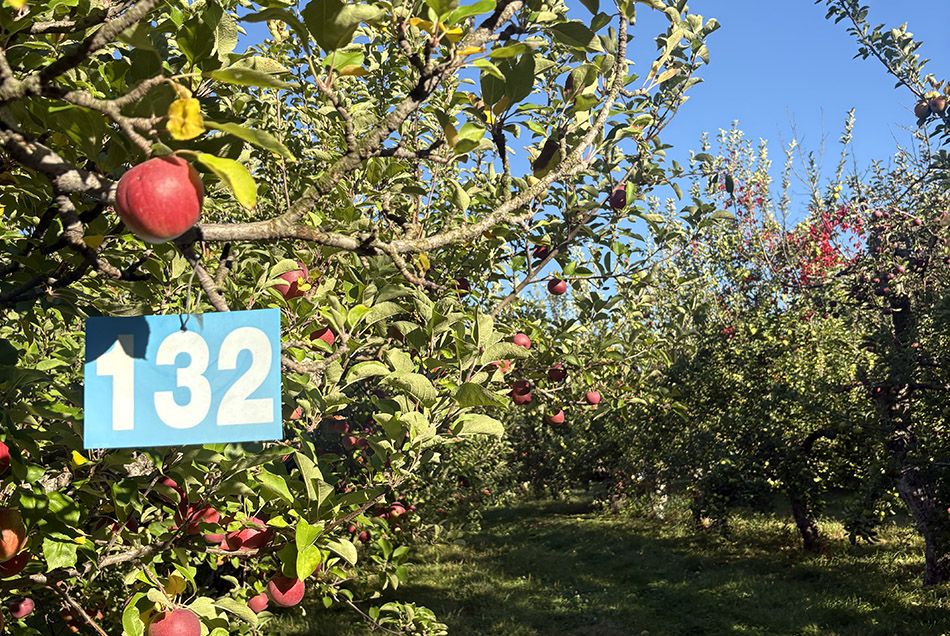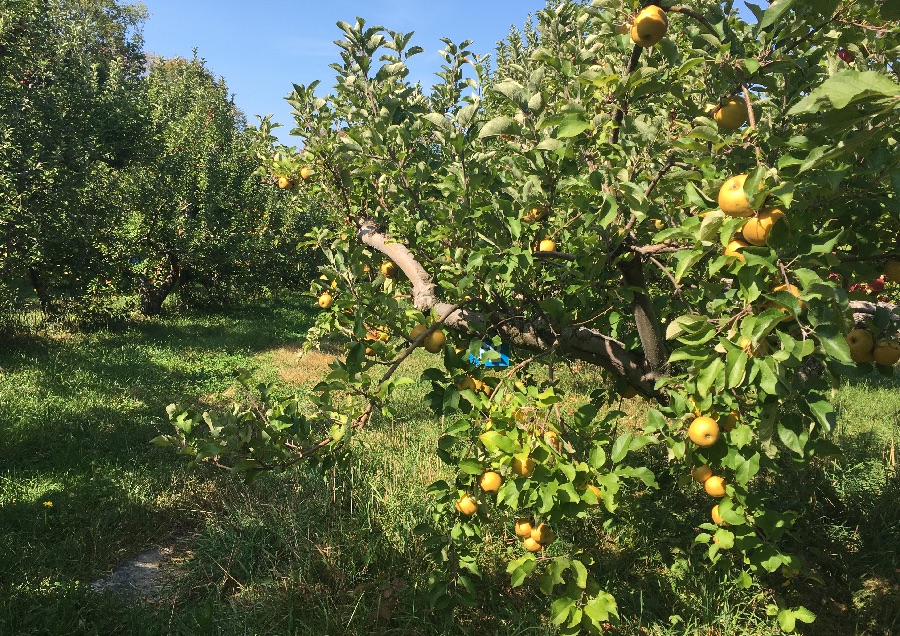Our locally famous "apple zoo" opens Saturday October 4th. This is the orchard where, way back in the 20th century, we tested unusual apple varieties to find out which of them would grow to peak quality on our Upper Valley slopes. (The fastest way to try out an apple is to graft a living stick or "scion" of the variety onto a branch of a mature apple tree. If the graft "takes," the original twig will grow and produce apples in 3-4 years, sometimes less.)
So now you can check out a wide assortment, scores of different apple varieties, in a small area. Some ripen early, some in midseason, some late. We've hung a number on each tree (some of the numbers are hard to see) and made a chart to let you know the variety name, the expected harvest time, and the principal uses of each. The varieties marked "Oct" under "Harvest Date" may need more time! Taste, but please do not pick the late ones too soon. First week of October the early ones may be past their best and dropping, the mid-season ones should be pretty ready, and the late ones will be relatively starchy, dense, and low on flavor. Print your own chart from the link above or borrow a copy here when you come.
PLEASE, again, let the late-season apples hang for a few more weeks! It's wasteful to rip great late, long-keeping apples like Baldwin or Yellow Newtown Pippin off the tree, before they reach their legendary best!  Also, heads-up for the ones designated "Bittersweet" or "Bittersharp" -- they're not grown for delicious fresh fruit! Like wine grapes, they're for juicing, then fermenting into "hard" cider. They can taste pretty weird. Feel free to try -- interesting, rarely enjoyable. Again, download a printable variety chart HERE or borrow a copy up here.
Also, heads-up for the ones designated "Bittersweet" or "Bittersharp" -- they're not grown for delicious fresh fruit! Like wine grapes, they're for juicing, then fermenting into "hard" cider. They can taste pretty weird. Feel free to try -- interesting, rarely enjoyable. Again, download a printable variety chart HERE or borrow a copy up here.
To recap: decades ago we grafted a different variety onto each of the old Mac and Cortland trees in Two Below the Barn. Some trees we later "top-worked" with more grafts to cover the whole tree with the new variety. After years of taste trials and fermentation trials, we decided on several varieties and sent bundles of scions to wholesale fruit-tree nurseries. They "built" hundreds of new trees for us - grafted by joining scions to root-stocks selected for our conditions and the size of tree we wanted. Those new trees we planted in renovated orchards here. After years of keeping customers strictly out of that tryout field, back when we needed every apple for taste-testing or fermentation-testing, it was time to let people in!
(Be aware that there are thousands upon thousands of named apple varieties in the world, more all the time. Our little collection seems big, but it's a small snapshot. Also -- no two apple seeds are alike genetically! But that's a whole other string of stories.)
Events


